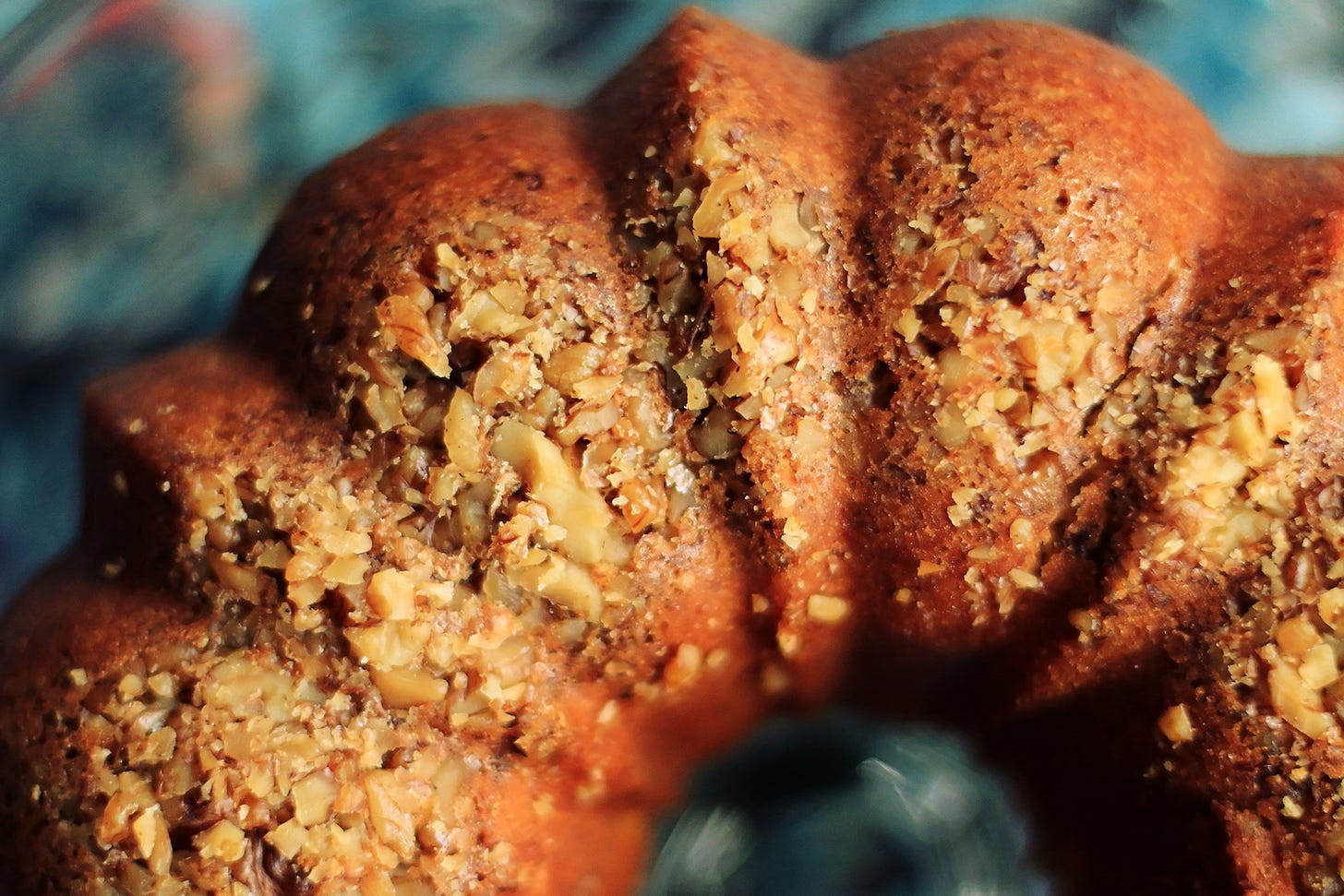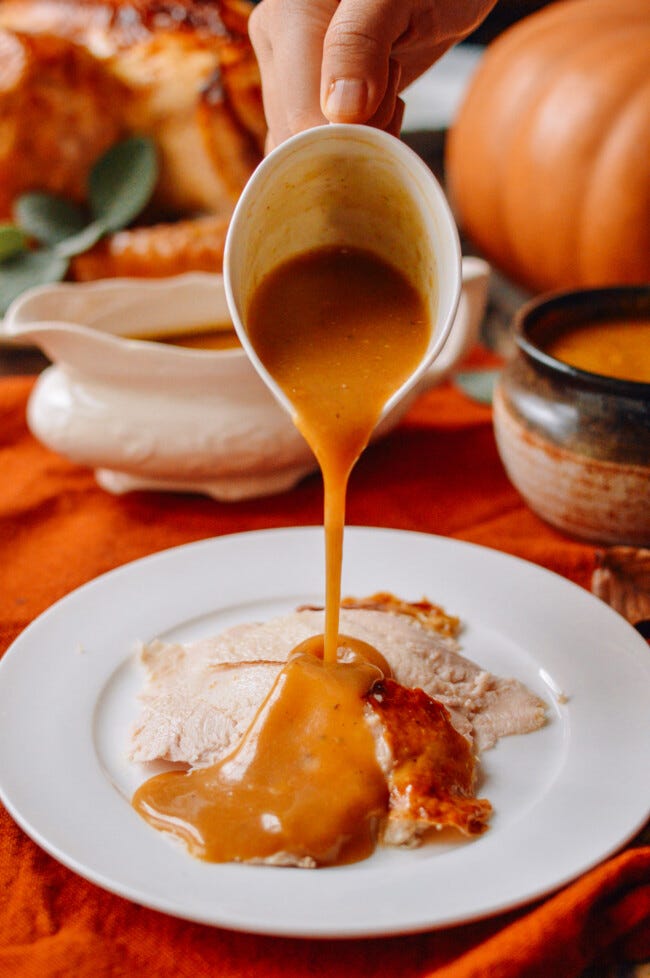A Southern Island Holiday Menu
garlicky mofongo-stuffed turkey, coconut-braised collards, pumpkin-plantain pudding
Del escritorio de Von:
For folks who are still debating what to prepare for Thanksgiving next week, I humbly offer this collection of holiday classics that span my island heart and my Southern home.
De corazón,
Von
Thanksgiving is a big deal in Puerto Rico. Growing up we often spent the holidays on the island with my grandmother, Tata, but when we couldn’t get there we prepared her classics at home in Atlanta—marinating the turkey overnight in garlicky adobo seasoning, trimming brussels sprouts (an ode to my grandmother’s childhood in Biloxi, MS), and making gallons of coquito rum eggnog for our guests. Once I was on my own, I gladly took on the role of hosting holiday meals for my chosen family, replacing canned jellied cranberry sauce with orange-ginger cranberry chutney among other variations. But no matter where I’ve lived or how much I’ve adapted my palate to fresher, more herbaceous flavors, the classics are what I really want this time of year.
Pernil y Pavochón
Like many Puerto Ricans on the island and in the diaspora, my family typically prepared pernil—an explosively flavorful roast pork, or turkey … sometimes both if we were cooking for a crowd. From a prep perspective, both dishes are fantastic options for a holiday meal as they benefit from one, or even two nights of marinating in the fridge—leading to super tender, juicy meat.
For the New York Times, I developed this pernil recipe, adapted from Chef Maricel Presilla’s version published in Gran Cocina Latina. It is (IMO) absolutely perfect, particularly if you take the time to make the crispy chicharrón. Watch this video for a step-by-step:
And there is nothing plain or dry about the way we prepared our turkey. We call it pavochón–a portmanteau of pavo (Spanish for turkey) and lechón (meaning roasted whole pig) because we season the bird much like the more manageable pork shoulder used for pernil. I’ve never written up the recipe, relying instead “on my palate’s memory” as my late mentor Cruz Miguel Ortiz Cuadra used to say. Almost a decade ago, I produced this story for NPR’s LatinoUSA, taking listeners on a sound journey through making pavochón in my teeny-tiny kitchen in East Harlem.
Island Fixins
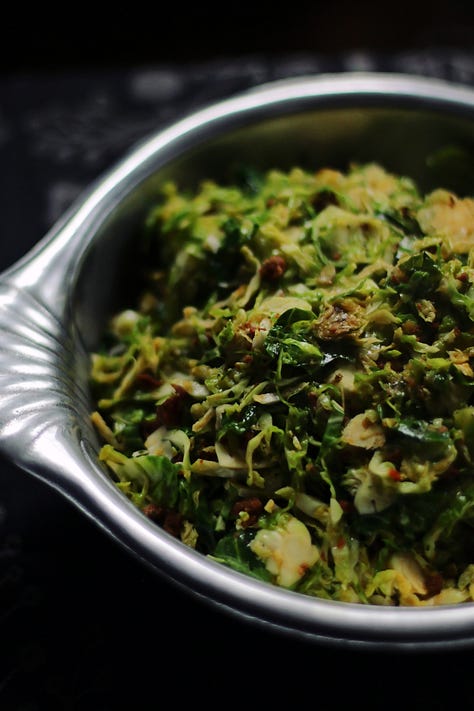

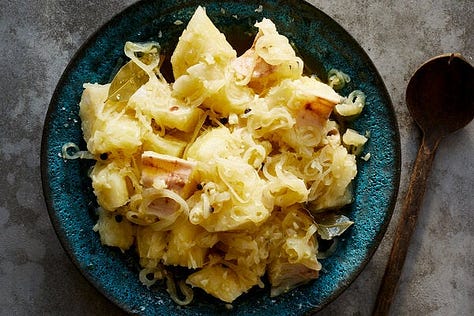
For my first book, Coconuts & Collards, I developed a recipe that’s become a new classic among friends and family. The book’s namesake coconut-braised collards are incredibly simple, deceptively rich despite being vegan, and in my estimation pair well with most holiday flavor profiles. Vegetable sides are always my favorite; among them is another C&C recipe for chorizo sofrito Brussels—an ode to my grandmother, who brought her love of Brussels sprouts from Biloxi to Puerto Rico. Sliced sprouts are sauteed with herbaceous sofrito and finely minced Spanish chorizo, coming together quickly for a dynamic, spicy variation on a holiday staple.

While researching Islas, I was reminded of the many islands colonized by the U.S. (including Puerto Rico, Hawaii, Guam, the Philippines) that also celebrate Thanksgiving. There, holiday meals include lots of sides, often serving starch with starch with starch. In Puerto Rico, we’d have yuca con mojo alongside arroz con tocino (rice with salt pork) and mofongo stuffing—all of which made it into the book—in place of mashed potatoes and such. Yes, it’s filling, and delicious because island starches are perfect for sopping up garlicky meat sauce.
Postres
Desserts are not my thing—I have more of a salt-meat-tooth—but I have perfected a few holiday classics. Among them is my Mami’s rum cake, made with boxed cake mix and pudding, and doused in boozy rum butter.
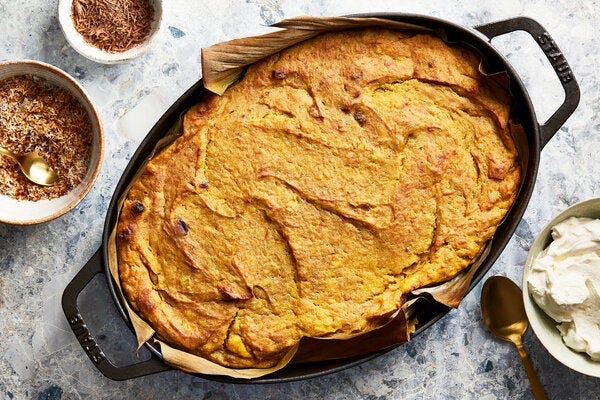
But new to my repertoire is cazuela, a dessert that is rich with history. I developed a version for the New York Times, through which I aimed to honor the profound African influence in Puerto Rican cuisine.
Puerto Rican cazuela, a richly spiced crustless pie with a texture between thick custard and bread pudding, is a unique dessert with a complex history. The name means “cooking pot” in Spanish, and the key ingredients — batata (white sweet potato), pumpkin and coconut milk — and the traditional cooking process speak to the island’s African ancestry. Flavored with ginger, cloves, cinnamon and anise, this dish also includes spices brought to the Caribbean during the spice trade. Cazuela has been prepared since at least the 19th century, and today it’s largely reserved for holidays. This version is an adaptation of the classic, with sweet plantain added for flavor, and a tip for using canned ingredients. While this dessert may seem challenging at first glance, it is incredibly adaptable and can be prepared days in advance in a casserole dish, ramekins or even foil cupcake tins.
Un Poquito Más
The holidays are a gauntlet for most food writers, a two-month carnival that publications plan months in advance. Folks across the industry put a lot of thought into their recipes, so if you’re still looking for menu ideas there’s plenty of options. I highly recommend Eric Kim’s brilliant guide to making perfect stuffing, Nicole Taylor’s phenomenal sweet potato onion dip, and the Woks of Life gravy guide. I also love Alicia Kennedy’s recent holiday menu + pumpkin pudding. La Piña editor KC Hysmith swears by Toni Tipton-Martin’s whiskey-laced southern pecan pie recipe and King Arthur Baking’s super easy sweet potato rolls.
Author: Von Diaz | Editor: KC Hysmith | Photo Curator: Cybelle Codish
When you subscribe to La Piña, you will be a part of a community of people curious about how food shapes society. While the bulk of our content remains free, please consider a monthly subscription so our contributors can be paid fairly for their time and expertise.






